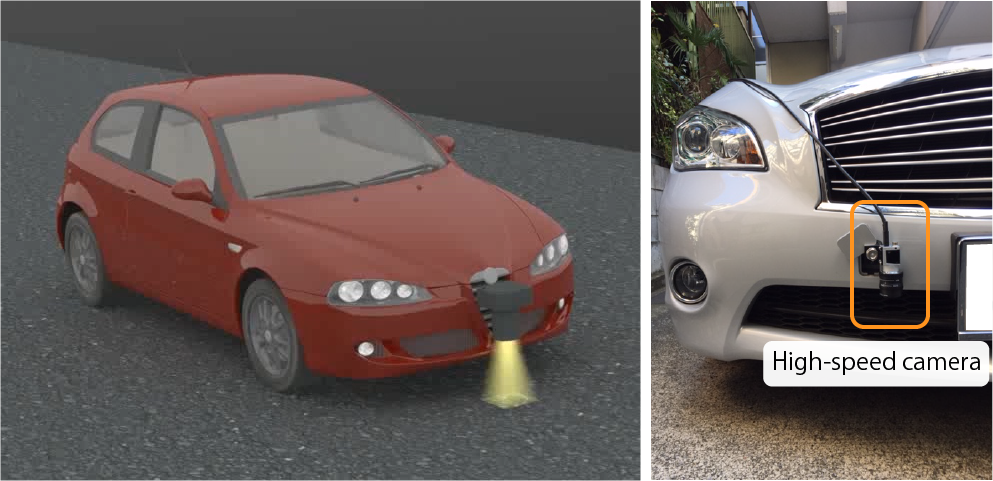Visual Odometry via Downward High-speed Vision
Summary
Self-localization of a mobile robot has become a key technology to achieve various kinds of applications ranging from vehicle navigation to autonomous driving. While Global Navigation Satellite System (GNSS) is widely appreciated for vehicle localization, its accuracy considerably decrease at a place surrounded by skyscrapers, or inside a tunnel where GNSS module no longer communicates with satellites. Manufacturer and researchers have devoted their efforts to compensate for such weakness, by using vehicle-attached sensors capable of retrieving vehicle's motion.
We propose a visual odometry technique using high-speed cameras installed vertically to the ground. Thanks to this camera configuration, we can reduce the problem to a continuous two dimensional image registration problem since transformation between adjacent frames can be regarded to be affine. While this configuration narrows the field of view to a very small region, high-speed cameras solve the issue by capturing frames every few milliseconds to make adjacent frames have enough overlaps to successfully estimate image displacements even in high-speed motion. We employed rotation invariant phase-only correlation as an image registration technique to achieve robust and accurate estimation even on the surface of extremely poor texture like snowy surface.

Reference
- Masahiro Hirano, Taku Senoo, Norimasa Kishi, Masatoshi Ishikawa: Dead reckoning for automobile by downward high-speed vision, 18th SICE System Integration Division Annual Conference (SI2017) (Sendai, Japan, 2017.12.22)/Proceedings, pp.3192-3195 (2017).



